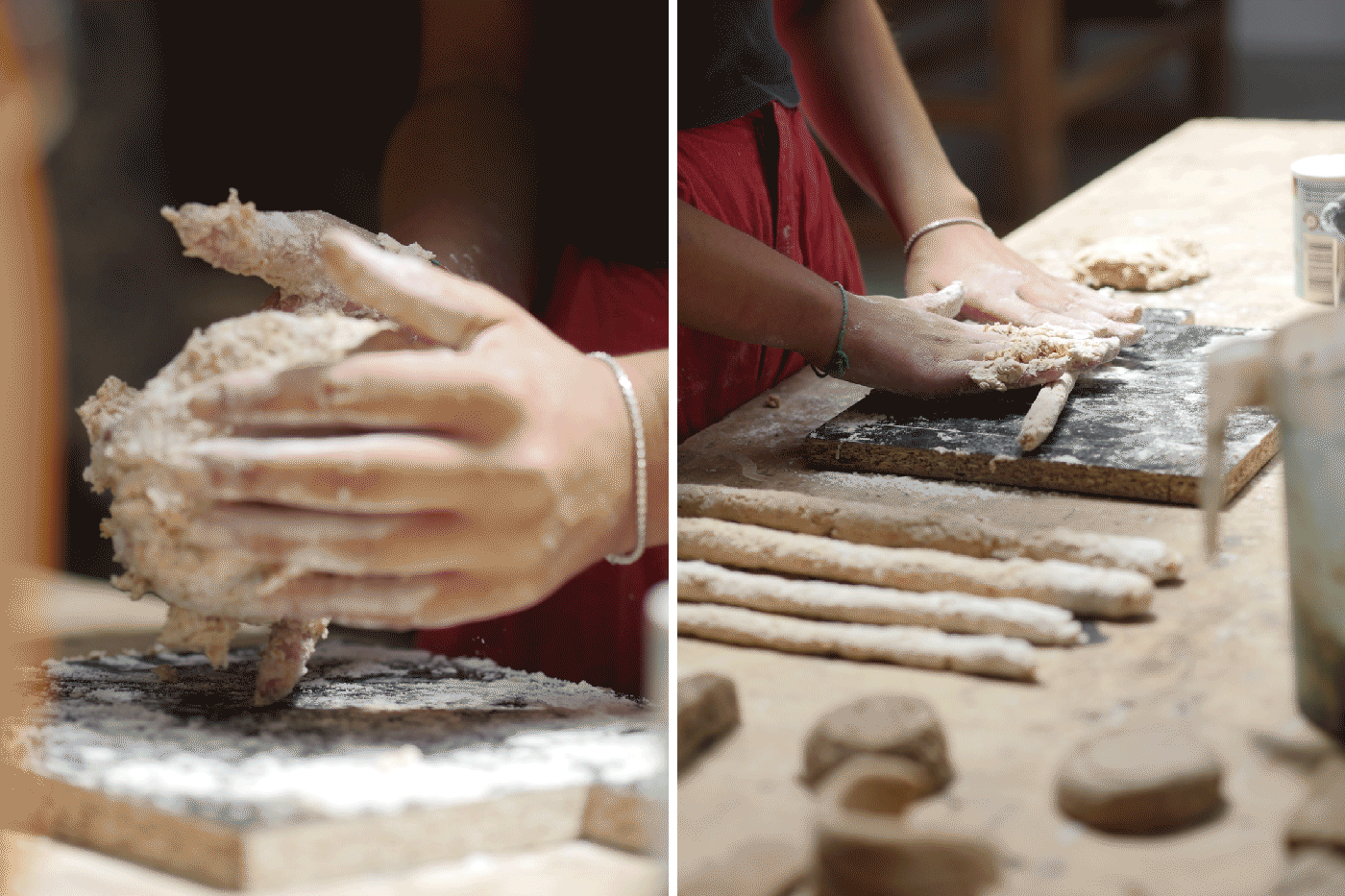Sofia Matheou, a collaborator
Sofia and Jack came both from Kingston University London, and arrived at the same time at TMDC. Even tho they have the same training, similar age and background, they are as different as it gets. It is inspiring to see how, so many things being equal, personality plays such a massive role in their work.
Sofia Matheou
Sofia is driven by experimentation, from what we know of her, she could spend her life researching different variations of color, textures and patterns. She wouldn’t need to finish a single product, but keep fine tuning the effects of few extra grams of any of the ingredients in the mix. She is the person that you need in the team to find out the unexpected.
instagram - sos_smat
TMDC: You have been working at TMDC for almost a year. How came your choice to come from the UK to Spain and especially to TMDC? Did you have a special project in mind?
Sofia: I arrived at TMDC in September and started working straight away. I had just finished my second year of university and due to the pandemic I missed lots of practical hours on my course and I felt I didn't have enough making and machinery skills to enter my final year confidently. After talking to some previous students who had completed an internship at TMDC, I thought this would be the best place to learn these skills but also have the freedom to explore and experiment on my own.
What do you study in the UK? And how did the experience at TMDC enrich your further studies?
I am about to start my final year in Product and Furniture Design at Kingston school of Art in London. As well as figuring out a lot about myself as a designer, TMDC has also helped me grow my confidence in my skills and knowledge which will no doubt impact my future projects positively.
How would you describe your experience at TMDC in 3 words?
“Stimulating, intensive and lively.”
Which part of the process do you prefer, designing or making? And from where do you get your inspiration?
I often start my projects based on experimenting with materials and picking the most interesting outcome to take forward. I usually don't think about the final design and let my process lead the way. This enables me to keep open minded throughout the project so I can see each experiment at its full potential. Inspiration often comes from mundane and everyday things and I try to manifest some of my personality into my work, by putting individuality and playfulness at the forefront.
“I usually don’t think about the final design and let my process lead the way.”
You started researching on biomaterials, especially saw dust, how came? And what is your main focus on it?
I wanted to use a material that was right in front of me and lots of it. Sawdust is everywhere at TMDC and is free. My aim for this project was purely experimental and it's the part of the design process I have most fun with. I wanted to look into ways on how I could use the material to present it in a different way. I started using glues and then making natural glues such as cornstarch and tapioca. This led me down lots of different paths and other materials/ingredients that I combined with sawdust to achieve various outcomes .
One mixture is - 1 cup sawdust 1 cup flour 2 tsp of baking powder and 3/4 cup of Luke warm water then bake for 15 minutes at 220°C then lower the temperature to 180°C and bake for another 10 mins.
TIPS - depending on how fine your sawdust is you may want to add more/less and play around with the water measurement until you form a dough. Different types of saw dust will play into the color and consistency of the dough.
How many material tests did you made and which combination is your favorite and why?
I made around 30 tests, some with the same ingredients but using a different process like rolling or pressing. My favorite combination is when I started mixing the sawdust with flour, water and yeast and then baking it to make ‘bread’ rolls. After a few days the bread would turn rock hard. Currently I'm using this method to make some models to test the strength and see if i could use it to make a full scale chair.
Will you use your research for future projects? If yes which ones?
Yes, the ‘bread’ roll outcome has already led me to an interesting path where I have been collecting stale bread from friends and bakeries. Because fresh bread is very popular in Spain but people often never finish it before it turns stale which produces a lot of waste. Once bread is stale it turns rock hard which I viewed as a material rather than food. The idea was to collect bread form different households and at TMDC to make a chair. The aim for the project was to highlight bread waste but still trying to make it a humorous and playful design so people are more willing to take part in the conversation.






